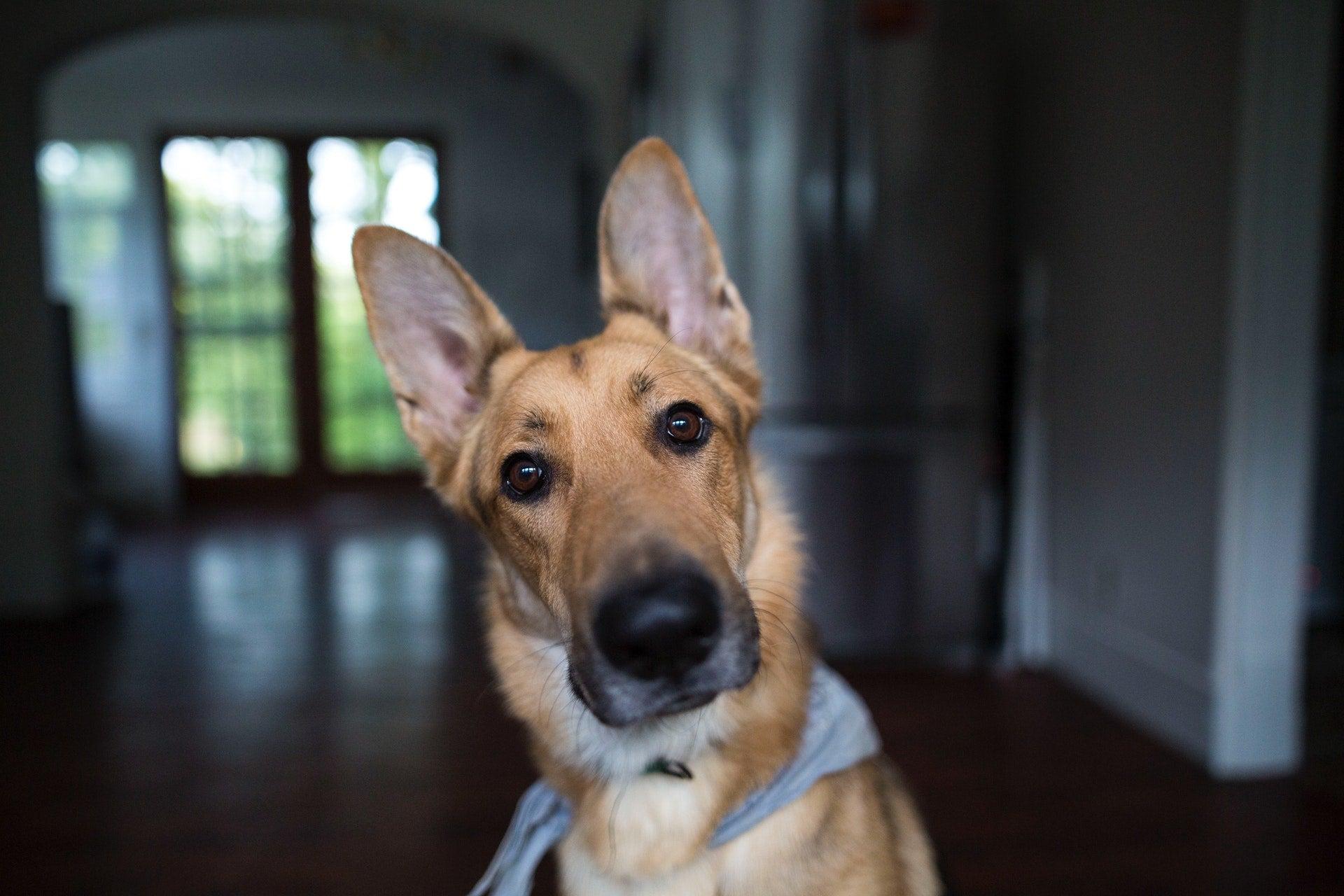In this blog, we learn about reading dog body language. Discover seven clever ways your pup communicates and tips on how to read dog body language below.
Reading Dog Body Language: 7 Clever Ways Your Pup Communicates

There’s no relationship purer than that between a dog and its owner. And more often than not, you know what your dog is thinking, and they can also pick up on your feelings. But is there a way to understand your dog more through their body language?
There’s an obvious limit when it comes to verbal communication because dogs can’t talk to us. But physical communication is possible for our pups to read! Dogs have their own language so that they can communicate with us – every dog has different characteristics, but there are things that dogs do in similar manners that can display certain thoughts. But, you’re going to need to know what to look for if you want to start reading dog body language!
Try to pick up hints in your own pup’s body language, and let your family and friends know what they are. It can protect everyone from misunderstandings, which may lead to aggressive behavior from a dog.
How To Read Dog Body Language

Whining Or Crying
When a dog whines, it can mean a few things. It usually depends on the context of the situation, so look around when your dog starts to make those crying sounds to work out what it could be.
Your pup could be trying to tell you that they’re thirsty or hungry. If they’re standing by or trying to guide you to the door, it could be them signaling that they need to go outside to empty their bladder. Or if they know there’s someone on the other side of the door, they might be excited to see them! Does your pup ever whine when you get back home?
Other reasons a dog might make these noises are fear or excitement. You can generally tell when a dog is excited, but if they’re whining out of anxiety or fear, take them out of that situation.
Bringing You Stuff
Dogs are playful beings, so when they’re bored, they’ll want to let you know. Although dogs love their toys, they don’t always know what is and isn’t made to be a toy, which can seem confusing to us. For example, they might approach you holding a slipper or a cloth. As mundane as these objects are to us, your dog sees them as an opportunity to have fun!
All they want in these moments is to spend time with you. And some dogs are extremely persistent, following you around, so if you simply take the item and put it back down, they won’t be happy.
Barking At You

Dogs bark at things, like birds or squirrels scurrying past, or at a knocking sound on the door, but does your pooch ever bark at you? The first reaction should be to check that there’s nothing threatening around. Even dogs that aren’t guard dogs tend to bark when they feel that you or they are in some kind of danger.
But perhaps it’s how they’ve learned to ask you for something. If you responded to your dog’s bark with something they wanted, such as water, food, or playtime, they’ll continue to bark for it because they know it works. If you want them to stop this behavior, trainers can teach them to ask for things in other ways.
Panting When It’s Not Hot
Panting is common when dogs are thirsty, which becomes more apparent when it’s hot. But sometimes dogs will pant when it’s not hot or when they want a drink.
Dogs pant when they’re stressed, too. Certain situations might cause your furry friend to feel scared or stressed, so it’s best to change their environment or take them out of it to avoid further stress, which could lead to aggressive behavior.
Cowering Or Tucking Their Tail In
These can be obvious ways that your dog is showing they don’t like something, which probably means they’re afraid! A lot of dogs don’t like the sound of fireworks for example, which makes them cower away into a corner or hide under some furniture.
If they avert their eyes and tuck their tale in, take it as a sign that they need to leave the area. Any feeling of stress, anxiety, or fear can develop into violence if those emotions are exacerbated. Even the nicest of dogs can become aggravated.
If you become concerned by your dog’s behavior at times, you can source and give them calming aids in the form of supplements that can help address these negative feelings. Make sure to look to a reputable brand that uses only ethically sourced, beneficial ingredients.
Stiffening Up

When dogs suddenly stand very still and focus their stare on one point, it’s a sign that something is wrong. It could simply be that they see another animal such as a cat, and they’re getting ready to react or pounce. Or, it could be something worse – look at where they’re staring, in case there is something dangerous.
If there’s no real threat, and your dog has spotted something appealing that you don’t want them to attack or approach, try to redirect their attention away from it. Call their name to get their attention, or lure them with a toy or treat if they don’t listen.
Snapping Their Head
Have you ever stroked your dog and they’ve suddenly snapped their head to the side? It’s a clear signal that they don’t want you to touch them, or maybe not in that particular spot.
It can go unnoticed by people, especially kids. Once the dog has given a warning by snapping their head, they might begin to growl if not left alone. Don’t just assume that your pup is an aggressive dog when this happens because there could be a reason they do that. When you can, check for any wounds if it seems to be a particular area.
If it is a general reaction to being approached by people trying to touch them, it’s worth seeing a trainer about this behavior. Rescue dogs might be less inclined to welcome new hands, because of treatment they have received in the past. Warn children and strangers that your dog might not like being stroked so that both they and the dog don’t become upset.
Reading Dog Body Language
Sometimes we wish our dogs could talk to us and tell us how they’re feeling – it would make life so much easier. But dogs are clever, and they know how to get your attention. Listen to what they’re trying to tell you through their dog body language, and pick up on the quirks they have! If your pup can communicate with you, and you understand, it will create a closer bond between the two of you. If you find that your dog has any other personality traits, write in and let us know!
 C
C



